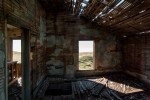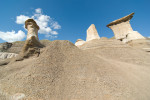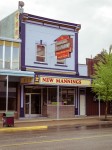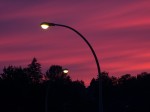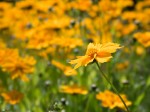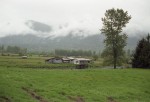Oct
30
2016

The Pentax SPII or Spotmatic II is a well built mechanical SLR and because it uses the ubiquitous M42 thread for its lens mount there are a multitude of old lenses that can be used with it. You could try to find a solution for the fact that it originally used 1.35V mercury cell batteries including using newer 1.5V silver batteries but I personally don’t even bother with a battery. With its completely mechanical shutter you can measure with a hand held meter or digital camera and then just set the aperture and shutter speed as needed.
The Spotmatic cameras are minimalist in their design but also very attractive in my opinion.
no comments | tags: Kodak, Pentax | posted in Cameras, Photography
Mar
30
2016

Image created in camera by moonlight using 4 30second exposures
One of the restrictions of many DSLR cameras is the limit of the longest exposure you can set is 30 seconds. This forces you to use bulb mode and a separate method of timing the exposure. There is an alternative though with newer Pentax cameras such as the K-3, K-3II and recently announced K-1. The way it is achieved is by changing the drive mode to interval composite. When set to this mode you also want to set the combining to additive so that all the exposures are summed together into one file. 
Next select an interval that is larger than the length of the exposure (This is a necessary setting). So if your going to use the 30 second maximum set this to around 33 seconds as that allows enough time for the exposure and processing of the file. After that it’s just a matter of selecting how many exposures or in this case how many times 30 seconds. For example 4 exposures would equal 2 minutes, 20 would result in a total of 10 minutes. There is a drawback and that is the necessary short gap between exposures. If there is something moving in a predictable way such as a star it’s going to leave a small gap where it isn’t recorded.

Here the multiple exposures have given my time to walk around in the scene and manual trigger a flash
Of course you can also use a shutter release cable in bulb mode and lock it down I just wanted to present an alternative method that is more automatic and controllable
Back before digital there really was only one way to create star trail images and that was to use a very long exposure and some trial and error. You can still do this but digital sensors behave differently than film over long periods and digital noise can become an issue. Some people have used a different method where they capture multiple images over a period of time perhaps hundreds of them and then stack them using computer software. The new Pentax K-1 apparently has a new composition mode that facilitates doing this in camera referred to as star streams (It turns out that that feature is actually a method of creating 4K time-lapse movies where the star trail ends fade out after a period of time, it will be interesting to see) but I wanted to share how you can do it now with the K-3 or K-3II
You still use the image composite drive mode but rather than setting the combining to ‘additive’ you want to set it to ‘bright’

This way bright objects such as stars will be added to the exposure while darker things such as a foreground will be left dark. This is different from a long exposure because of the way the frames are combined and is most easily illustrated. The following pictures where both taken with settings of ISO 1600 f5.6 120 Seconds. The one on the left with bulb mode and the one on the right by combining 8 15 second exposures.
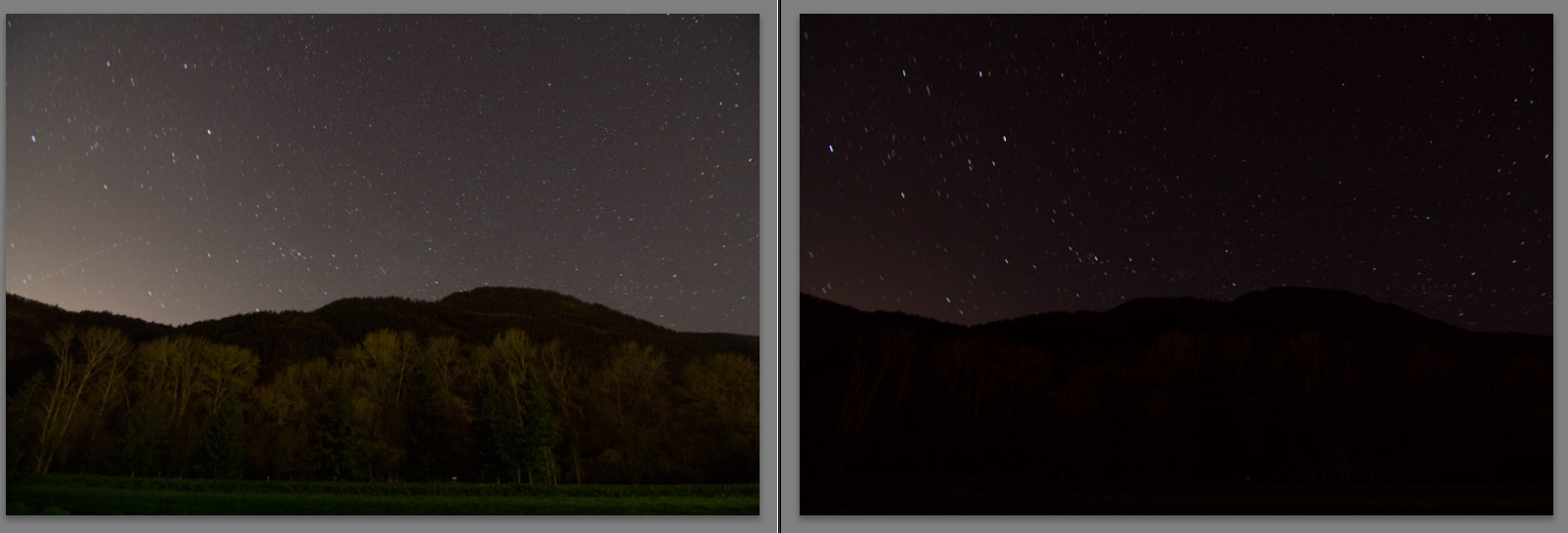
While not long enough to really show the star trails yet you can see that the accumulation of light pollution and noise is having an adverse effect on the long exposure more than the composite image. Also at some point continuing on in bulb mode the foreground would become over exposed.
In this next image I’ve stepped it up to 18 exposures of 20 seconds for a total of 6 minutes which is still too short a time to create a dramatic image but this can easily be extended further by just adjusting the number of images to be ‘stacked’

If I get a clear night in the near future I will update this with a longer capture. The point though is that there are tools built into these cameras that are waiting for creative exploration. As a side note the image that is generated can be a RAW file and tends to have less noise due to the combining of the images. Also generating images in this way doesn’t require dark frame subtraction and the time penalty that entails. Although the dark frame count down timer on the top LCD is a nice touch its like waiting for water to boil and is lost time. And of course you aren’t burdened with dealing with a whole pile of files on your card and in your computer which is a very film like notion.
5 comments | tags: Digital, long exposure, Pentax, star trails | posted in Cameras, Photography, Uncategorized
Aug
17
2015
Photography can be about a lot of things and when it comes to carrying gear it can be about compromises. How much space do I have for lenses and how much weight am I willing to carry? When it comes to the wide angle end of things you can’t really beat having a really nice lens that captures an expansive view. Often though for reasons of weight it can be easier to just carry a lighter kit lens that maybe goes down to 18mm on APS-c or maybe a better lens that goes to 16mm but if your willing to carry the extra weight of an additional lens there is something special about going all the way to 12mm on APS-c. This would be equivalent to 18mm on a ‘full frame’ camera. The horizontal angle of view of a 12mm lens on APS-c equates to 88.5 degrees while an 18mm lens is 66 degrees this is a signifigant difference illustrated bellow. (Note I am referring to horizontal angle not diagonal, human vision with two eyes is nearly 180 degrees horizontally but a good portion of that is peripheral)

Done well a wide angle image helps to make the viewer feel more like they are right there looking at the scene for themselves. You can back up of course to take in more of the scene but that isn’t always an option as in the illustration image taken from a logging road bridge deck. Another option is to stitch together several images but that can have issues and isn’t suited to anything with motion. So sometimes there really is no substitute for a good wide-angle lens. Personally as I shoot with a Pentax APS-c DSLR I use the smc PENTAX-DA 12-24mmF4ED AL[IF] but there are different options for it and other camera systems. Additionally these images are combed from 4 different cameras (Pentax K10D,K7,K-01,K3) proving my assertion that spending money on a lens is a better long term investment than on a camera.

Here are sample images with this lens all taken at the widest setting of 12mm
2 comments | tags: lens, Pentax | posted in Cameras, Photography
Jun
15
2015

The Pentax Espio 928M has for me a very desirable focal length of 28-90mm which makes it directly comparable to the Canon Z90W which I also have. The Pentax has the slightly slower lens at f4.8-10.9 verses the Canon at f4.5-9.9 either way if you choose to use one of these anachronisms your going to want to use a film of at least ISO400. It should be mentioned that the 928M is not the same camera as the 928 as the lens is slower and it does away with some great features like exposure compensation and multi-exposure mode. So if it were not for the fact that it has a wide angle of 28mm I wouldn’t have even bothered to pick it up. The thing is despite it’s short comings in the end it’s the lens in front of the film that maters and the lens performed quite well actually. Even the corners of the frame are reasonably distortion free when compared to other similar cameras. So with good light and fast film the Espio 928M is almost a camera worth using but really if your still shooting film at this point there are going to be better options. P.S. the Konica Lexio 70 is not one of them trust me.

no comments | tags: film, Pentax, point and shoot | posted in Cameras, Photography
Jan
18
2015

It’s been one year that I’ve had the HD PENTAX-DA 55-300mm F4-5.8 ED WR and I am still very pleased with it. For the money it is a very good lens and the weather sealing has been a definite plus for me.
It’s minor weak points seem to be an increase in softness and chromatic aberration as you move away from the image center towards the corners and it’s slower aperture at the long end (f5.8) but all things considered it does the job and provides photographic freedom for creating images. The distortions seen in the corners are at their strongest at 300mm and require stopping down to about f8.0 to make an appreciable difference. So after a year of use I would say unless I need f2.8 or some improvement in image quality I tend to take the lighter DA55-300 with me over the DA*50-135 because of its greater versatility and lighter weight. You can see my user review for it here HD PENTAX-DA 55-300mm F4-5.8 ED WR user review and some other thoughts here HD PENTAX-DA 55-300mm F4-5.8 ED WR and the rest of the kids. If I needed to I would buy it all over again.
Bellow are 100% views of some test images I shot. I created and printed a chart specifically to test the performance of the lens.

While I didn’t set the test up with extreme rigor it demonstrates my points and matches my findings in real world situations. The first image bellow is from the center of the HD DA55-300 ED WR at 120mm. You can see that when used at its widest aperture for this focal length the image is somewhat soft and with chromatic aberration showing up as purple fringing. Stopping the lens down to f9.0 decreases this type of aberation leaving primarily transverse aberations as seen by the red fringe on the now sharper image.

It should be noted that with some minor processing the chromatic aberations can be greatly reduced and further adjustments can yeild a superior image as seen in this before and after. Again taken from the center of the frame, now at 300mm but still with a wide open aperture of f5.8

As I mentioned previously the image corners suffer the most when it comes to distortions. The image that follows is taken from the upper left corner with an aperture change from f5.8 to f10 and no further processing.

Here for comparison purposes is a central crop from the DA*50-135 and the DA55-300 both at f9.0 (The camera was moved to provide similar framing) You can see that the DA* 50-135 is sharper and less distorted.

But with a little processing on images from both lenses the playing field is leveled slightly between them.

The image above is from the center of the frame where the image bellow is from the lower left which in the case of my lens seems to be the worst of the corners.

All this should be taken with a little bit of a grain of salt however as these are 100% crops from the demanding 24mpixel Pentax K-3 under more extreme conditions than the average picture is taken.

(The salt picture is taken with the DFA100 WR macro as the HD Pentax-DA 55-300mm F4-5.8 ED WR does not lend itself to this type of image making because of its maximum magnification of 0.28X)
It’s certainly not my intent to leave the reader with a lingering sense that the lens is weak. It’s actually a good lens optically and you are going to have to pay for any improvements either in limiting yourself to fixed focal lengths or by paying more money or both.
Here are some more images from the past year taken with this lens and the Pentax K-3 with a few cameos from the K-01 mirrorless.
2 comments | tags: DA 55-300, DA55-300, HD Pentax, HD Pentax-DA, lens, Pentax, Water resistant, WR | posted in Cameras, Photography
Nov
8
2014

Having bought one of the original Pentax Q cameras and having a few lenses for it, it seemed like an easy decision to then pick up this camera combination when it was on sale. First let’s get the main caveat of this camera out-of-the-way. Yes it has a tiny little sensor but if that is the only thing you go by your missing out on a fantastic little camera that does an admiral job of creating images. While it isn’t much larger than a point and shoot camera its versatility leaves all others behind. I have a selection of lenses from fish eye to adapted lenses equivalent to 500mm and beyond but for this post I’ve limited the images to those shot with the 5-15mm kit lens (23-69mm equivelent in terms of 35mm film). The combination does have quite a bit of chromatic aberration as seen in the 200% RAW detail at the top left but with a quick one click adjustment in Lightroom it can be somewhat mitigated as seen on the bottom right.
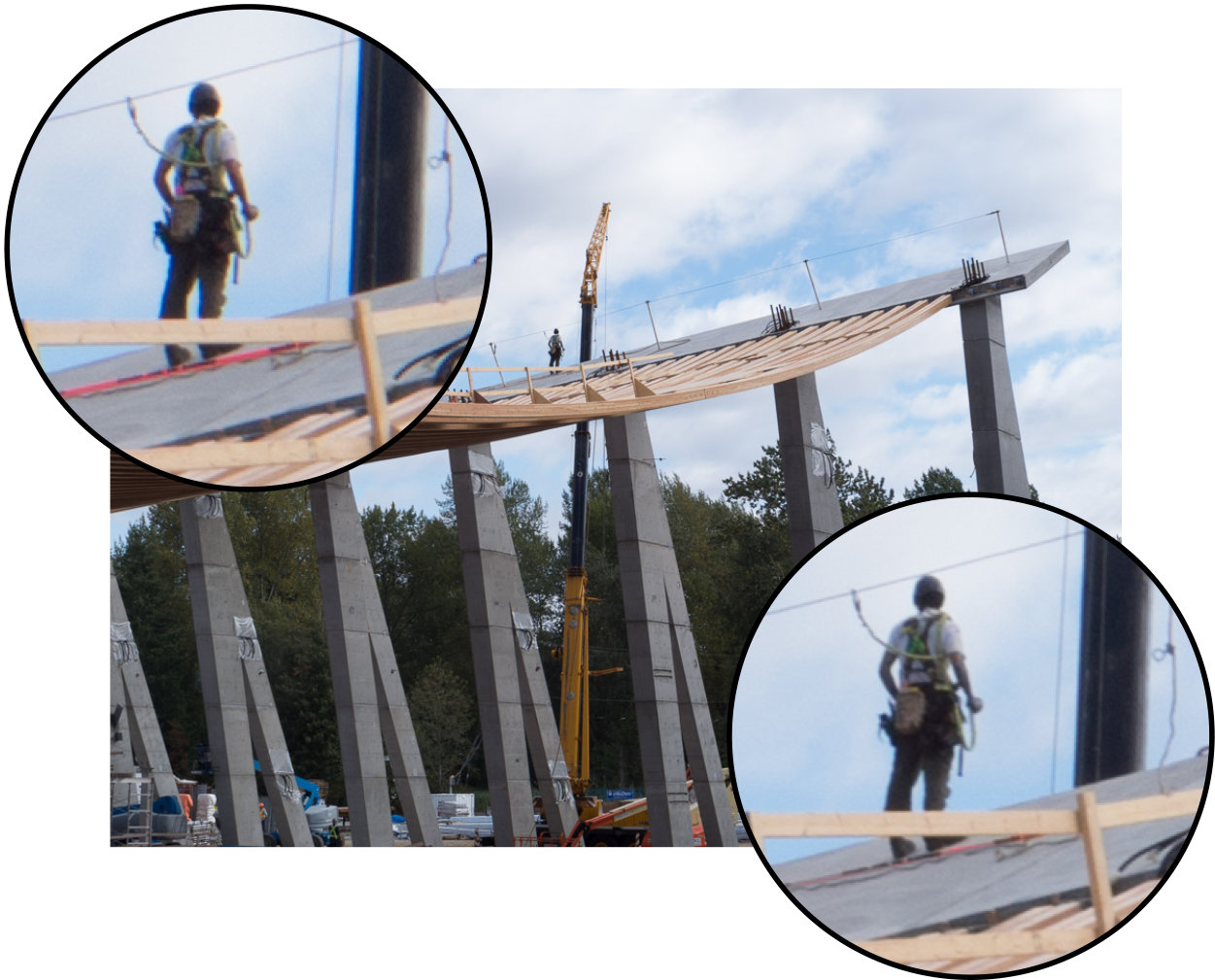
It’s small size means that I am more likely to take the camera along where every I go and the versatility of it means that I rarely feel like I needed a better camera. There is even more to this little beast that I’m not touching on but as a straight forward photography tool it packs a ton into its tiny little package. The pictures that follow are a mix of images straight out of the camera and some edited to be more in line with what I intended. Using the Q7 reminds me to have fun and create images rather than obsess over the technical aspects. (Yes those first two images are meant to look grainy and pictorial)
And finally if you click on the image bellow a full resolution image will open that I think demonstrates how much this camera and lens can resolve. It exceeds what I have been able to achieve with 35mm negative film in resolving power and rivals my older DSLR which is quite a feat.

no comments | tags: camera, Digital, Pentax | posted in Cameras, Photography
Oct
18
2014

I think the fish eye lens on the Pentax Q is the thing that really makes the little system. There is no other fit in your pocket camera combination that matches it. It is just pure photography fun. My thoughts and images can be seen here
Pentax Q Fish-eye
no comments | tags: Pentax, Q | posted in Cameras, Photography
Sep
24
2014

The Pentax Q has a tiny little mouse dropping of a sensor, 1/2.3″ (a measurement as clear in information as liters/100km would be to a horse that just found out he had one horespower) What it means though is that it only has about 1/30 of the surface area of a 35mm film frame. If you want to equate the field of views between those two disparate sizes while using the same lens you need to multiply the focal length by 5.6 on the Q. In this case the DA 40 XS would wind up being the equivalent of a 224mm f2.8 lens on 35mm film. And that is what makes this a neat little combination, it functions like a close focus telephoto and because the lens is so thin it fits the little camera nicely. Another benefit of the small sensor is that it provides greater depth of field for a given aperture. I know that sounds counter intuitive in this ‘thin is in’ shallow depth of field mad world but when you’re measuring it in millimeters having a little extra in focus without the need to stop the lens down can be a real advantage. So not only is the DA40 XS a great lens on an APSc DSLR with an adapter it fits nicely on the Pentax Q and here is another hint ‘it fits on a 35mm SLR’ too Pentax-DA 40mm F2.8 XS on film.
3 comments | tags: adapter, Digital, Pentax | posted in Cameras, Photography
Sep
5
2014


The Pentax smc PENTAX-DA 40mm F2.8 XS Lens is an impossibly thin pancake lens that was originally designed to go with the digital APS-c Pentax K-01 but as some people have noted it also covers a full 35mm film frame. I needed to find out for myself so I mounted it to my Pentax MZ-6 a camera that I had given away but received back and am very happy about that. I had really under rated the camera, while not built to take a beating like a professional camera, it has all the functionality of one. Back to the lens though. While the lens is very thin it shouldn’t be all that surprising as many 35mm film point and shoot cameras have similar sized lenses that are often even closer to the film plane. As a lens used with 35mm film I can say that it does an excellent job with very little vignetting which is the one thing you might expect to see when using an APS-c lens. The fact that it takes up next to no room in a camera bag and that it can be used on both film and digital really makes this a must carry lens for me.
2 comments | tags: film, lens, Pentax | posted in Cameras, Photography, Uncategorized
Aug
23
2014
While I primarily shoot colour film over black and white and I also prefer to see most digital pictures in colour, some landscapes seem to just look better in black and white. Whether that is because my idea of the wilderness is filtered through the historical language of photography. A language where the landscapes of the West are portrayed in grandeur and black and white, or that perhaps there is some reason we prefer the contrast that colour images lack in these circumstances. What ever the reason, I have chosen to convert these images into different shades of grey and prefer them that way. These were all taken using the incredible Pentax K-3 DSLR which provides more detail than I have ever been able to capture before.
1 comment | tags: K3, Pentax | posted in Cameras, Photography, Processing




























